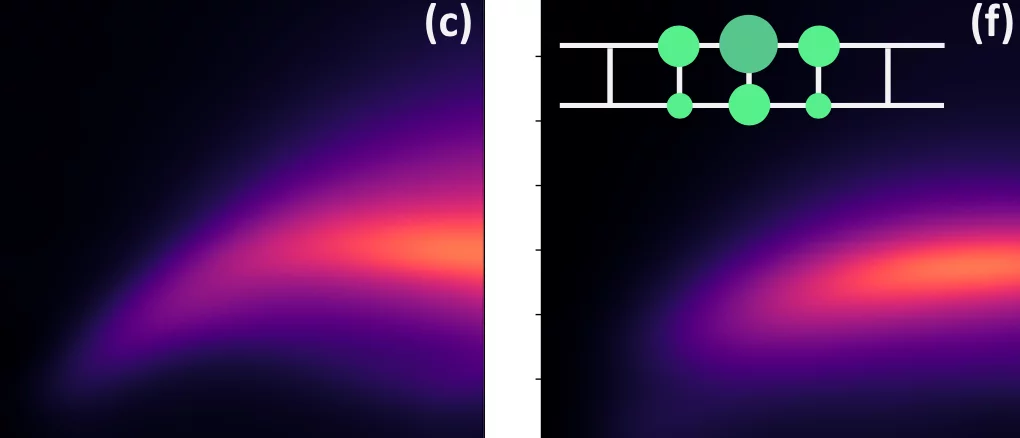We studied the magnetic excitations in the quasi-one-dimensional (q-1D) ladder subsystem of Sr14−xCaxCu24O41 (SCCO) using Cu L3-edge resonant inelastic X-ray scattering (RIXS). By comparing momentum-resolved RIXS spectra with high (x = 12.2) and without (x = 0) Ca content, we track the evolution of the magnetic excitations from collective two-triplon (2 T) excitations (x = 0) to weakly- dispersive gapped modes at an energy of 280 meV (x = 12.2). Density matrix renormalization group (DMRG) calculations of the RIXS response in the doped ladders suggest that the flat magnetic dispersion and damped excitation profile observed at x = 12.2 originates from enhanced hole localization. This interpretation is supported by polarization-dependent RIXS measurements, where we disentangle the spin-conserving ΔS = 0 scattering from the predominant ΔS = 1 spin-flip signal in the RIXS spectra. The results show that the low-energy weight in the ΔS = 0 channel is depleted when Sr is replaced by Ca, consistent with a reduced carrier mobility. Our results demonstrate that off-ladder impurities can affect both the low-energy magnetic excitations and superconducting correlations in the CuO4 plaquettes. Finally, our study characterizes the magnetic and charge fluctuations in the phase from which superconductivity emerges in SCCO at elevated pressures.
Facility: SLS
Reference: Y. Tseng et al, npj Quantum Materials 7, 92 (2022)
Read full article: here


